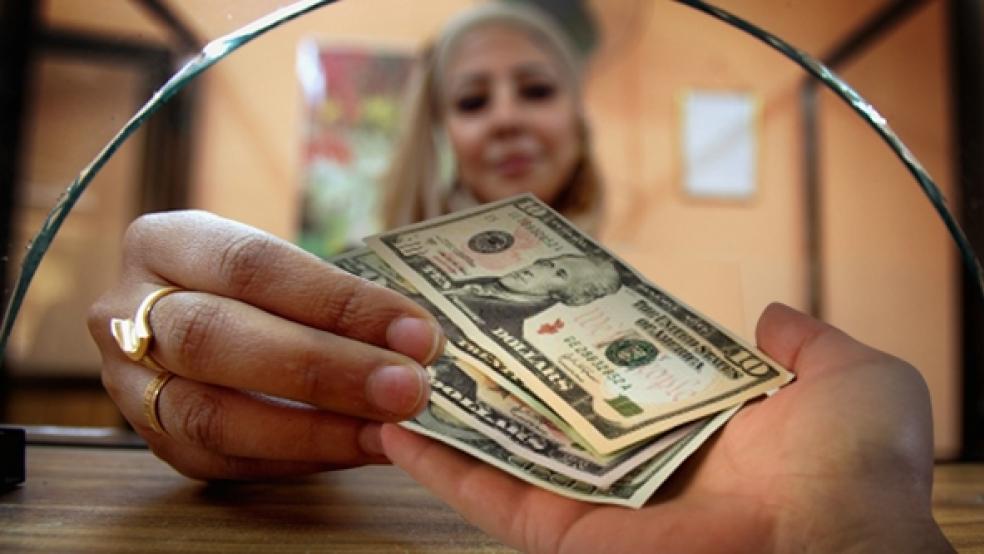|
The financial crisis of 2008 rocked the foundation of the U.S. banking sector. The shock left banks short of capital and hesitant to lend, even as the recession cut deeply into loan demand. The Federal Reserve has pumped in an ocean of lendable funds, trying to prime the process of bringing banks and borrowers together. But many still wonder when, if ever, bank lending will return to normal.
We’re not there yet, but recent signs have been encouraging. Despite the sluggish economy, loan growth is finally beginning to pick up in key areas, reflecting both greater willingness to lend and increased desire to borrow. Loan volume of U.S. commercial banks rose at a one percent annual rate in June as expansion in business loans and non-mortgage consumer lending more than offset the ongoing contraction in http://www.thefiscaltimes.com/Articles/2011/07/20/AP-Home-sales-on-pace-... real estate financing. It was the third consecutive monthly increase after steady declines for more than two years, and weekly reports from the Fed show the trend is continuing in July.
The upturn in bank lending, which follows substantial easing in bank lending standards over the past year, will offer crucial supports to help the economy weather the first-half slowdown. Gross domestic product grew a tepid 1.3 percent in the second quarter, the Commerce Dept. reported last Friday, with first-quarter growth revised down to only 0.4 percent, while hiring has slowed to a crawl. However, economists at UBS believe that easier lending standards are a sure-fire indicator of future job growth and that payroll gains will most likely pick up in coming months. “We are not particularly disturbed by what we see as a temporary slowdown in private job formation in May and June,” says UBS economist Maury Harris.
Banks are increasingly looking to lend in large part because their balance sheets are stronger, as seen in many second-quarter earnings reports. Both large money-center banks and smaller regional lenders say credit quality is improving as delinquencies decline, freeing up funds that would otherwise have to be set aside for loan losses. Fed surveys note that competition among banks for new business is increasing, with a rising percentage narrowing the spread between loan rates and the exceptionally low cost of funds. With profits rising, loan losses shrinking, and loan portfolios expanding, banks are making themselves more attractive to investors by lifting dividends and buying back shares.
Lending to businesses is leading the credit upswing. The volume of commercial and industrial (C&I) loans in the second quarter rose at a 9.6 percent annual rate, the largest increase in 2½ years. Banks have progressively eased lending standards for C&I loans to large and medium-sized companies for the past six quarters. Small companies have seen easier terms and conditions in each of the past four quarters. Economists expect to see signs that this loosening in standards is continuing when the Fed issues it third-quarter report from bank senior loan officers in mid-August.
More credit is starting to flow to small businesses, as well. That’s important, because small firms account for about half of U.S. job creation, and depend greatly on banks for credit, unlike large corporations that have the option to raise funds in the capital markets by issuing bonds. In the second quarter, the balance of banks reporting stronger vs. weaker demand for commercial and industrial (C&I) loans by small businesses was positive for the first time in five years, according to the latest Fed survey. Another positive sign is the gradual rise in C&I loans made by small banks, whose customers tend to be small local companies. Small-bank C&I loan volume has been rising gradually in 2011 after hitting bottom late last year.
Despite increased attention by policymakers over the past year to the dearth of small business lending, the problem has been not so much banks’ unwillingness to lend but simply a lack of loan demand, reflecting weak sales. Although the percentage of small companies saying credit is harder to get is still somewhat higher than before the recession, it has fallen steadily over the past two years, from a peak of 16 percent, to 9 percent in June, according to the National Federation of Independent Business.
Banks are also warming to consumer loans. Despite sluggish job markets, households have made great progress in getting their financial obligations under control, allowing qualified borrowers to take on more debt. So far this year, monthly financial obligations of households have fallen to only 16.4 percent of household income, the lowest since 1994. In the second quarter, the percentage of banks reporting increased demand for auto loans was the highest since 2003.
Banks began easing lending standards for auto loans, credit cards, and other borrowing this time last year. In the 2011 second quarter the percentage of loan officers saying they were more willing to make consumer loans rose to the highest level in 17 years. The volume of consumer credit began to expand in the fourth quarter of last year, led by nonbank finance companies, but bank lending turned up slightly in May and surged to a 7.9 percent annual rate in June. “The aftermath of the financial crisis does not seem to have prevented banks from returning to relatively typical behavior in the C&I and consumer loan markets,” says Barclays Capital economist Dean Maki.
Not typical, however, is mortgage lending, which accounts for about 22 percent of all bank loans and continues to decline well past the point where it would have been expected to turn up based on past recovery patterns. Banks remain hesitant to ease lending standards, even for prime loans, and demand is still weak. The volume of residential mortgages fell at an 8.6 percent annual rate in the second quarter, and any normal pattern in real estate lending is most likely a long way off. Lending for commercial real estate ventures also continues to shrink.
The ebb and flow of bank lending during recessions and recoveries exerts a powerful force on any business cycle. Aside from this cycle’s problems in mortgage lending, banks are finally beginning to behave as they usually do in a recovery. Barring some new shock, especially from the debt troubles in Washington or Europe, evidence that loan growth is beginning to expand in response to easier lending standards and stronger loan demand is a key sign that the recovery has staying power.





